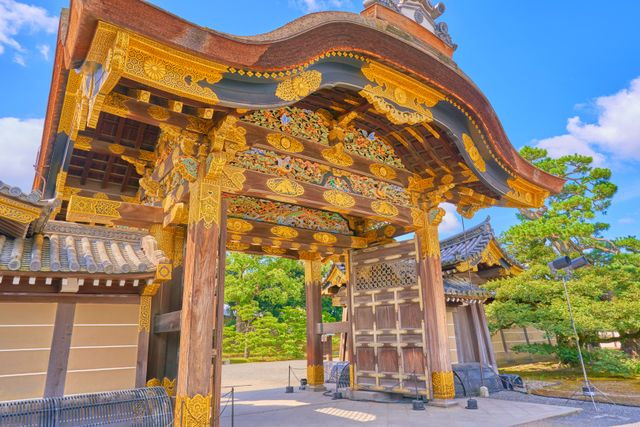Nijo Castle (Rikyu Nijo-jo)
menuMenu
Nijo Castle witnessed the rise and fall of the Tokugawa shogunate. The Ninomaru Palace (National Treasure) and Ninomaru Garden (Special Place of Scenic Beauty) are must-sees.










Highlights
- Ninomaru Palace (National Treasure)
- Ninomaru Garden (Special Place of Scenic Beauty)
- Honmaru Palace (Important Cultural Property)
- The Splendid Karamon Gate
- 'Nightingale Floors' (Uguisu-bari corridors)
Basic Information
- Address
- 541 Nijojo-cho, Nakagyo-ku, Kyoto, Kyoto Prefecture Search for tourist attractions in Kyoto
- Access
- A short walk from Nijojo-mae Station on the Kyoto Municipal Subway Tozai Line. Show route
- Op.Hours
- 8:45 AM to 5:00 PM (Last entry at 5:00 PM)
- Cld.Days
- December 29th to 31st
- Fee
- Castle Entrance Fee: Adults ¥800, Junior/Senior High School Students ¥400, Elementary School Students ¥300 Ninomaru Palace Admission (separate from castle entrance fee): Adults ¥500 Honmaru Palace Admission (separate from castle entrance fee): Adults ¥1000, Junior/Senior High School Students ¥300, Elementary School Students ¥200 Exhibition and Storage Museum Admission (separate from castle entrance fee): Adults ¥100
- INFO
- Photography is prohibited inside the Ninomaru Palace. Eating and drinking are prohibited within the castle grounds, except in designated areas. Reservations are required to view the Honmaru Palace. The East Bridge will be closed for construction from August 26th to September 26th, 2025.
